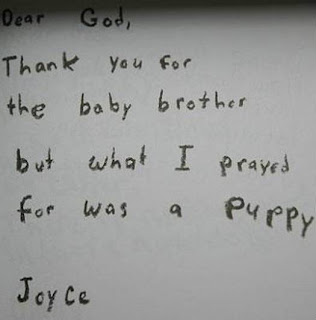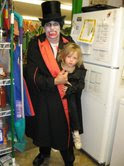
I’ve been thinking a lot about hyperactivity these days. Perhaps because I see the hyperactive in a different light than most people. I see hyperactivity from the inside rather than from the outside. The question of hyperactivity begins with the question itself – what is hyperactivity?
When you read about it, the experts say, “It’s a disease treatable with certain mind altering drugs.” That’s a bit far to go for someone like me who is as hyperactive as they come. I don’t believe I’m mentally ill nor do I believe I need mind altering drugs! So I have to go back to the question of precisely what is Hyperactivity?
Suppose we take a different road into the whole meaning of hyperactivity? Suppose we legitimize hyperactivity for a few moments by saying it’s a personality type much like other personality types. Let’s look at some other personality types to compare:
There is a personality type of the quiet withdrawn person who rarely speaks and spends a lifetime letting others take the lead. This person rarely starts a conversation, has few friends, and spends a lot of time alone. Would you find this person mentally ill and needing medication? Probably not because this person does not bother anyone.
Let’s look at the artistic type. This person is often up and down like an umbrella. They are always finding some weird quirky thing that they talk about with great interest. They constantly produce little craft items with their hands or with their minds. They often make nothing into something. They save and display all measure of things because of the shape or the color or the shadow that the object casts. Would you find this person mentally ill and needing medication to change his or her personality? Probably not because he or she produces interesting things to look at.
What about the athletic type? This person is always thinking about movement and going. This person runs, jumps, lifts, and exercises for full pleasure of the movement. This person is often competitive, arrogant, off putting when it comes to strength and energy or the shape of his or her body because it’s the whole focus of every conversation. Is this person needing to be slowed down by medication, and can you call this person mentally ill? Probably not because we get a lot of pleasure from sports and the heroes we call sportsmen and women.
The comedian is always trying to get a laugh and will often disrupt conversation, will disrupt a whole room and draw unnecessary attention to himself and his own brand of the funnies. He will do nearly anything to make people pay attention to him. Sometimes it works and sometimes it doesn’t, but we wouldn’t medicate him because sometimes he makes us laugh.
Now let’s look a the hyperactive personality. Hyperactivity is just that – a body that is most comfortable when it is moving. Unlike the athlete who desires movement to hone his body and to become more skilled, the hyperactive is uncomfortable when his motion is stopped. Sitting for any length of time will often make the body cramp and tingle and ache. When you direct the hyperactive in competition or the movement of any sport, the product is superb. It’s a match made in heaven.
At the same time, the hyperactive is often artistic and often creates whole worlds for himself because he has the energy and interest in “doing.” Most hyperactives will create and recreate their worlds with anything that’s near just to have something to do. Sitting or doing repetitive work is as alien to them as creating is to most non- hyperactives. That is unless they can do two things at once like making and watching, or singing and dancing, or doing and talking.
Many hyperactive people are comedians and want the attention of others. They are driven to “do” and make people laugh and cry by their never ending actions.
And last but not least, the hyperactive can be very lonely and keep to himself because there are few others who really understand the intense drive inside them that is screaming for others to turn up the crank. Hyperactive personalities view the world in high speed much like a 78 record. Unfortunately, the world’s record turns in 33.
So why is the hyperactive regarded as mentally ill and needing medication?
There are two types of hyperactive personalities: directed and non directed.
The directed personality is well formed by parents who understand their multidimensional child and who direct that child every day to make sure that ALL his talents shine every single day. They don’t give the child a break in their demands to do, do, do, and do more until the child drops. Lots of chores, lots of responsibilities very early, and lots of sleep. Lots and lots of calories are served and lots and lots of hours of sleep are mandatory for a directed on target hyperactive. It’s a matter of getting up every day charged and ready for a day of go, go, go, do, do, do! As long as there is “production” there is no problem, but then there is the other side.
The non directed personality has been ignored, denied, disliked and suffocated by a well meaning parent who only wants his or her child to “be like everyone else.” What these parents don’t understand is that their super child will never be “like everyone else.” The hyperactive personality is many personalities in one, and the overriding need to do, do, do, will make the suffocated child a mess if he is not directed by the parent. Without direction, the child has no boundaries, no scheme, and ultimately a life filled with chaos. All his energy goes to distruction and disruption.
It’s an exhausting job to direct such a personality. The worst thing a parent can do is to medicate one of these personalities and try to force his elephant personality into a nice kitty or a nice doggie. He is and will always be an elephant, and an elephant needs room, food, and a place to roar. Medication makes a child feel lost and alone. He is frightened by his parents inability to regard him with the esteme he deserves. Hyperactive children see their young worlds in a very different light than other children. They are keenly aware of the differences between what they are and the next child.
What most hyperactives think is that most normal people are dullards and lazy. A well formed hyperactive will be bored by most people and will go quiet after a while simply because the communication track has no value to him. A good comparison is sitting a hungry person in front of a slice of pizza and 4 ounces of milk. That’s fine for most people, but the hyperactive needs the whole pizza and the whole gallon of milk!
Put two hyperactives together in a room and you have a whole new set of rules. Ever listen to two or three hyperactives talk? It’s like a playing two or three records all at once and everyone knows what everyone else is saying and it all makes sense. The non hyperactive goes home sick with a headache, and the hyperactives all go home supercharged and ready to rake six acres of leaves.
The theme songs for hyperactivity are: energy begets energy; the more you do the more you do; nothing is too hard, to long, to much; tired is for sissies; is that all there is?
And the sad thing is, none of this is acceptable to the non hyperactive. The personality type is considered obnoxious and arrogant and much in need of slowing down, so we medicate him into normalcy. Thank God we didn’t medicate Alexander the Great, or Theordore Roosevelt, or Davy Crocket or St. Paul.















